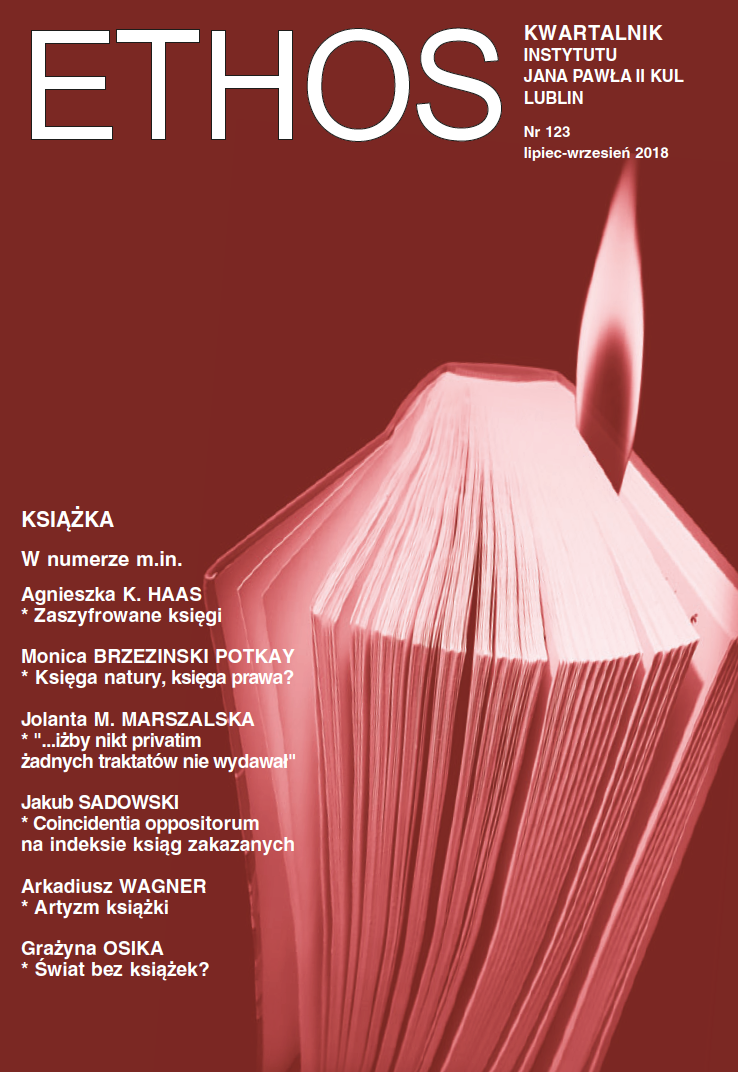MEDIUM TOŻSAMOŚCI. Książka w kulturze średniowiecznej Europy
A Medium of Identity: The Book in the Culture of Mediaeval Europe
Author(s): Wanda BajorSubject(s): Christian Theology and Religion, Cultural history, Social history
Published by: Katolicki Uniwersytet Lubelski Jana Pawła II - Instytut Jana Pawła II, Wydział Filozofii
Keywords: scriptorium; codex; manuscript; parchment; paper; incipit; explicit; colophon; pecia; palaeography; brachygraphy; codicology
Summary/Abstract: The Middle Ages ‘feed’ on the book. The culture of this period was shaped by Christianity, which is sometimes called a ‘religion of the book.’ After the decline of the Roman Empire together with the disappearance of statehood and the expansion of the illiterate barbarian peoples, the only remaining institutional mainstay of culture was the Church, which executed its mission on the basis of books. Apart from the ‘book of books’—the Bible, there were liturgical books as well as a rich literary tradition of commenting the Bible and forming the Christian doctrine and its apology. In the Middle Ages, the book was therefore both an object of cult and the main creative factor of culture. The Church created a network of schools and, as a consequence of their development, the university. At first, books were produced in monasteries where scriptoria were founded as centers of literary culture, supplying schools, churches and individual recipients with manuscripts. Together with the development of schools and the founding of universities in the 13th century, the production of books was taken over by lay people, becoming the source of their livelihood. Systems of text copying developed: writing under dictation or the pecia system. Created by artisans and scholars, the mediaeval codex was the work of many hands. The production of a codex involved the manufacture of parchment or paper, toilsome work of a copyist and an illuminator, as well as the effort of a bookbinder who supplied the codex with a (frequently richly decorated) binding. Handwritten books were eventually supplanted by printed ones. The history of books is also connected to the development of writing (with its most mature form, called the Carolingian minuscule, codified in the 8th century). Mediaeval manuscript collections are studied by various disciplines, e.g. bibliology, librarianship, archivistics, manuscript studies (which include codicology, as well as palaeography and brachygraphy). Currently modern editions of manuscript texts representative of different scholarly disciplines are available.
Journal: Ethos. Kwartalnik Instytutu Jana Pawła II KUL
- Issue Year: 31/2018
- Issue No: 3
- Page Range: 77-102
- Page Count: 26
- Language: Polish
- Content File-PDF

